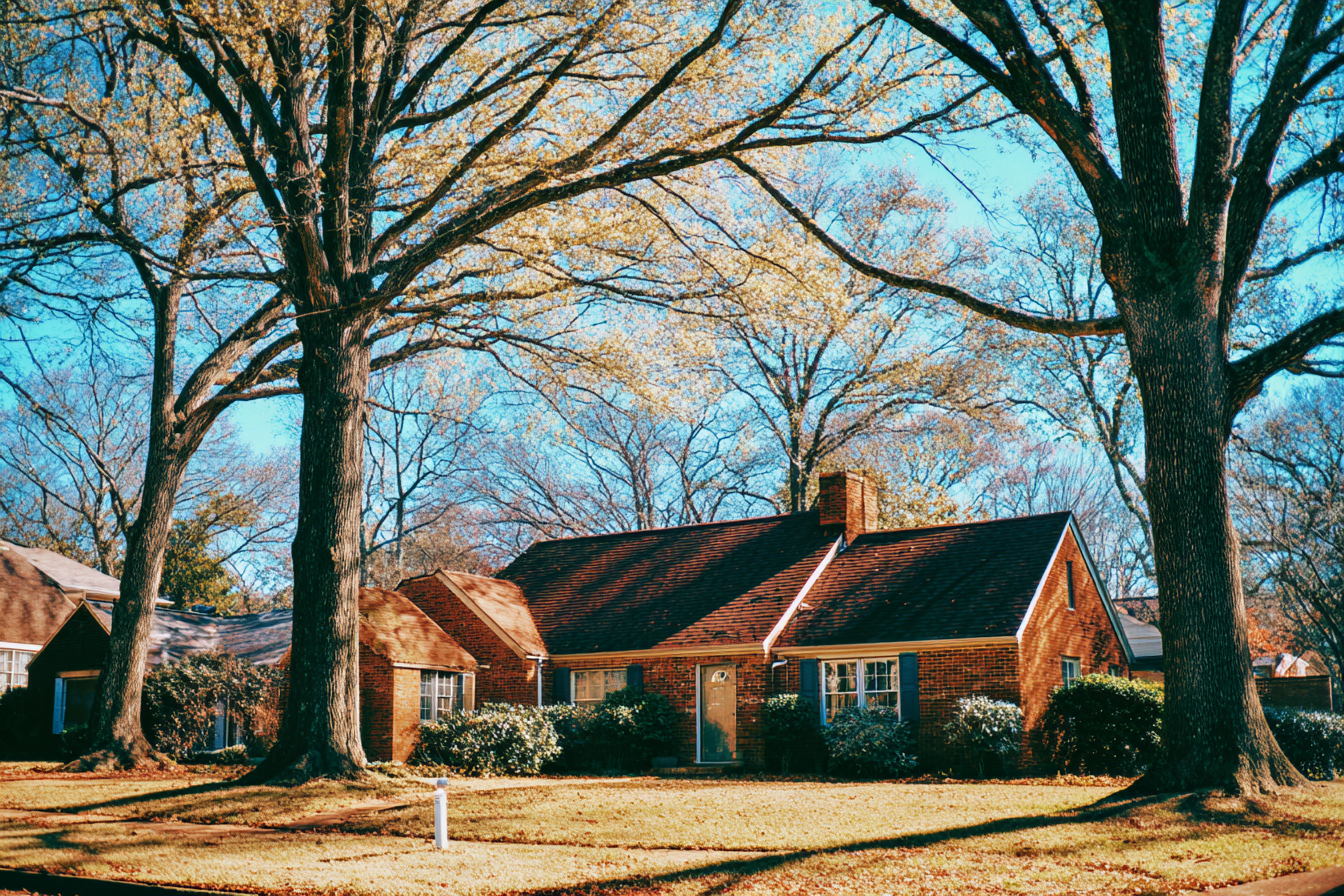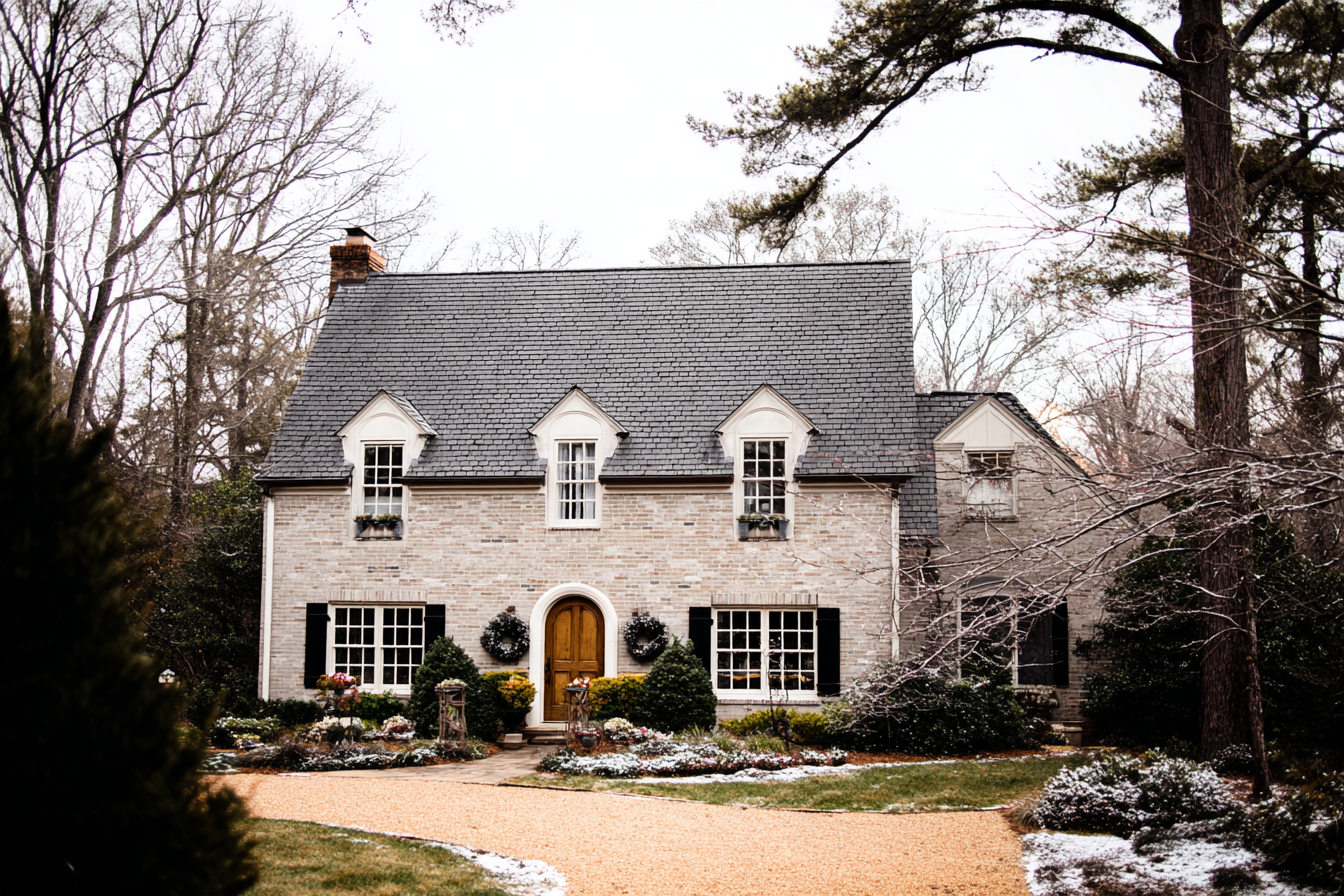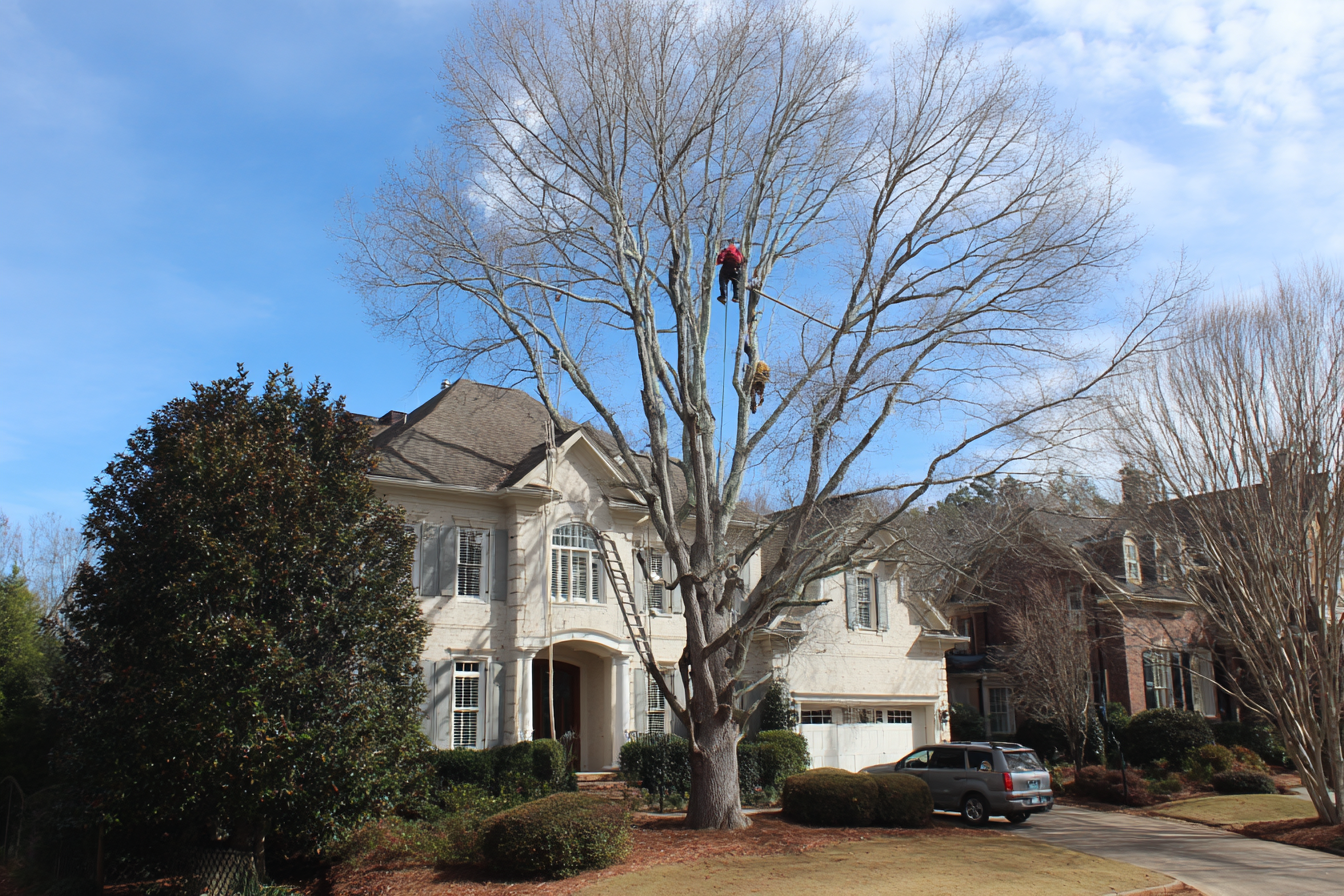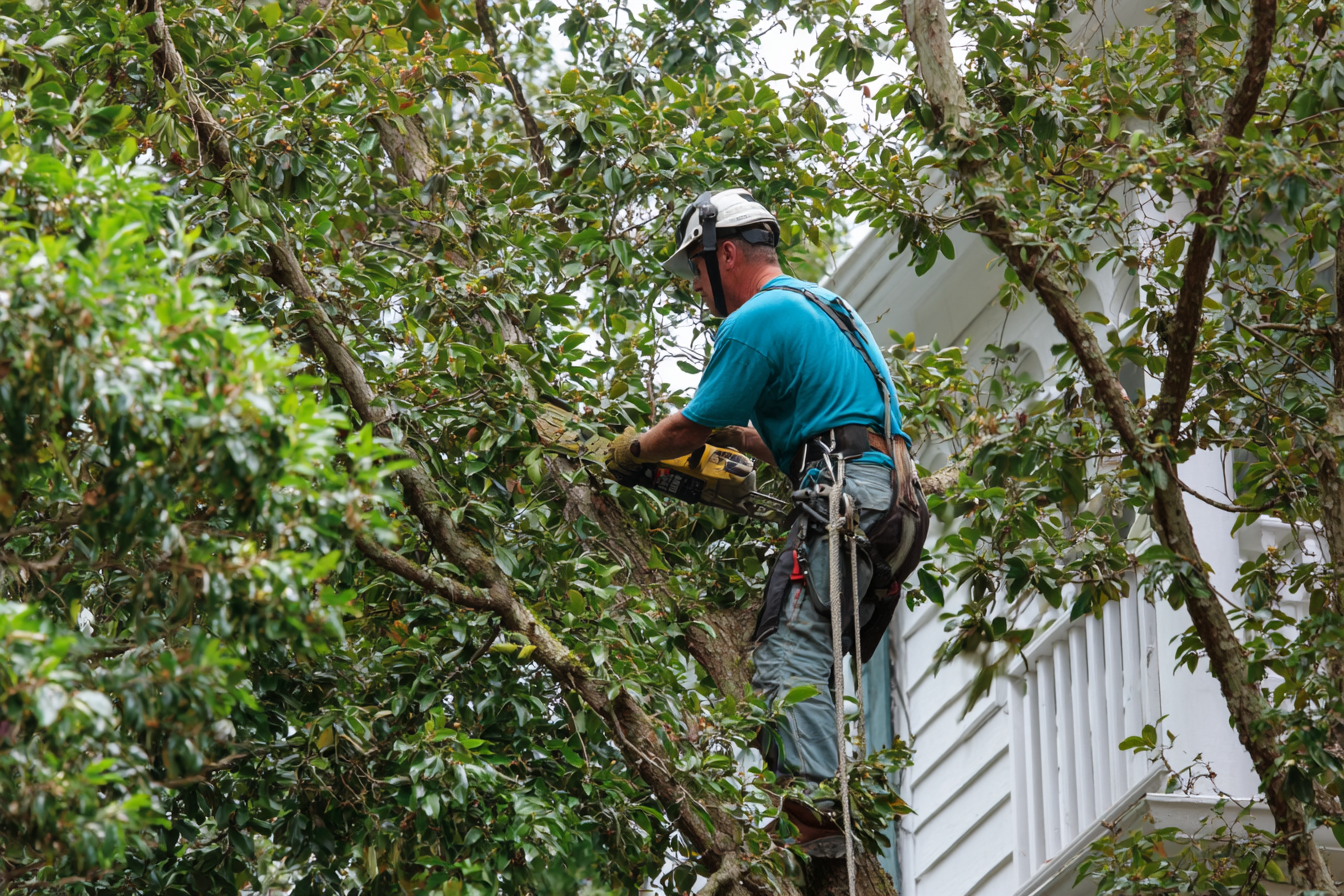
Your trees are more than just part of your landscape. They provide shade, enhance curb appeal, and contribute to the local ecosystem. In Locust Grove and McDonough, GA, however, they face a constant threat from various pests and diseases. Staying vigilant is key to protecting these valuable assets.
This guide will help you understand common tree problems in our area. We'll focus on the destructive Emerald Ash Borer and prevalent fungal diseases affecting oak trees. Early detection and professional intervention can make all the difference.
Why Tree Health Matters in Locust Grove & McDonough
Healthy trees are resilient. They can better withstand environmental stresses and minor pest or disease issues. Neglected trees, on the other hand, become prime targets for severe infestations and infections, often leading to irreversible damage or even death. This is why proactive tree care is essential for every homeowner in our community.
Understanding the specific threats in our region allows for targeted prevention and treatment. The climate and local species in Georgia create unique conditions for certain tree problems to flourish. Knowing what to look for empowers you to act quickly.
Spotting the Emerald Ash Borer in Georgia: A Homeowner's Checklist
The Emerald Ash Borer (EAB) is a devastating invasive insect. This tiny, metallic-green beetle poses an enormous threat to ash trees across North America, including right here in Georgia. Its larvae feed on the inner bark, effectively girdling and killing the tree.
Early detection is crucial for managing EAB infestations. Once a tree shows significant signs of decline, it may be too late for treatment. Here's a homeowner's checklist to help you identify potential EAB presence.
What is the Emerald Ash Borer?
The Emerald Ash Borer (EAB), Agrilus planipennis, is a non-native, wood-boring beetle. Originally from Asia, it arrived in the U.S. in the early 2000s, likely via wood packing materials. Since then, it has spread rapidly, causing widespread mortality of ash trees.
Adult EAB beetles are slender and metallic green, about half an inch long. The larvae are creamy white, segmented, and can grow up to 1.5 inches. They create distinctive S-shaped tunnels, called galleries, under the bark.
Identifying Ash Trees on Your Property
Before you can look for EAB, you need to confirm you have ash trees. Ash trees are common in Georgia landscapes. Look for these distinguishing characteristics:
- Opposite Branching: Ash trees have branches and buds that grow directly opposite each other on the stem, not staggered. This is a key identifier.
- Compound Leaves: Ash leaves are compound, meaning multiple leaflets are attached to a central stem. Each leaf typically has 5-11 leaflets.
- Diamond-Patterned Bark: Mature ash trees often have bark with a distinct diamond-shaped ridge pattern. Younger trees may have smoother bark.
- Samaras (Seed Pods): In late spring/early summer, ash trees produce paddle-shaped winged seeds called samaras, often in clusters.
If you're unsure if a tree is an ash, consult a certified arborist. Correct identification is the first step in protecting your trees.
Signs of an Emerald Ash Borer Infestation
Once you've identified your ash trees, regularly inspect them for these tell-tale signs of EAB:
- Canopy Thinning and Dieback: The crown of the tree may appear sparse, and branches in the upper canopy might start to die off. This often begins at the top and works its way down.
- D-Shaped Exit Holes: Adult EAB beetles create unique D-shaped exit holes, about 1/8 inch in diameter, as they emerge from the bark. These are small but very distinctive.
- Epicormic Sprouts: The tree may produce suckers or new shoots from the base of the trunk or along the main branches. This is the tree's attempt to survive by putting out new growth below the damaged areas.
- Woodpecker Activity: Increased woodpecker damage, particularly flaking bark, can indicate the presence of EAB larvae underneath. Woodpeckers feed on the larvae, leaving tell-tale signs.
- Vertical Bark Splits: As the tree tries to heal, vertical cracks or splits in the bark may appear, revealing the larval galleries underneath.
- Serpentine Galleries: While difficult to see without removing bark, S-shaped tunnels packed with sawdust (frass) under the bark are a definitive sign of EAB larvae.
If you observe any of these symptoms, especially multiple signs, your ash tree may be infested. Contact a professional arborist immediately for an assessment.
EAB Treatment and Prevention Options
Managing EAB depends on the severity of the infestation and the value of the tree.
- Prevention: For high-value ash trees, preventative insecticide treatments can be highly effective. These are typically applied by a professional as a soil drench, soil injection, or trunk injection. Timing is crucial, often in spring before infestation.
- Early Infestation Treatment: If an infestation is caught early (less than 50% canopy thinning), chemical treatments may still be effective in saving the tree. These treatments usually need to be repeated annually.
- Removal: Ash trees with more than 50% canopy dieback are often too compromised to save and should be removed. Infested wood must be handled and disposed of according to Georgia Department of Agriculture guidelines to prevent further spread. Do not move firewood from infested trees.
It's important to remember that no treatment is 100% guaranteed. Consulting an ISA certified arborist is vital for determining the best course of action.

Fungal Diseases Affecting Oak Trees in McDonough and How to Treat Them
Oak trees are a cornerstone of the Georgia landscape. Their majestic presence adds beauty and value to properties in McDonough. However, these noble trees are susceptible to a variety of fungal diseases that can compromise their health and longevity. Recognizing these diseases and knowing when to act is crucial.
Fungal diseases thrive in specific environmental conditions, often related to moisture and humidity. Our local climate can unfortunately be quite conducive to their spread. Here are some common fungal diseases affecting oak trees in our area.
Common Fungal Diseases Affecting Oak Trees
- Oak Wilt (Bretziella fagacearum): This is one of the most serious diseases, capable of killing an oak tree rapidly. It's a vascular disease that disrupts water flow.
- Symptoms: Rapid wilting and browning of leaves, often starting from the top of the tree and moving downwards. Leaves may develop a bronze or tan discoloration, and defoliation can occur quickly.
- Spread: Oak wilt spreads through root grafts between nearby oak trees and by sap-feeding beetles carrying fungal spores from infected trees to fresh wounds on healthy oaks.
- Treatment: Prevention is key, as there is no cure for an infected tree. Infected trees and their root systems should be professionally removed and destroyed to prevent spread. Fungicide injections can sometimes be used preventatively or to slow the spread to adjacent trees through root grafts, but they do not cure the disease.
- Anthracnose: A common fungal disease that affects various tree species, including oaks.
- Symptoms: Irregular brown or black spots on leaves, often along veins. Leaf distortion, curling, and premature leaf drop. Twig dieback may also occur.
- Spread: Spores overwinter in fallen leaves and on infected twigs. Wet, cool spring weather favors its development and spread.
- Treatment: Typically not lethal to mature, otherwise healthy trees. Raking and removing fallen leaves in the autumn can reduce fungal inoculum. Pruning infected twigs can help. Fungicide applications in early spring, as buds begin to swell, can be effective in severe cases or for high-value trees.
- Oak Leaf Blister (Taphrina caerulescens): This fungal disease primarily affects the leaves of oak trees.
- Symptoms: Circular, raised blisters or "blisters" on the upper surface of leaves. These spots are initially yellow-green and later turn brown, causing leaf distortion.
- Spread: Favored by cool, wet weather during bud break in spring.
- Treatment: Rarely causes significant damage to the tree's overall health. Fungicide applications before bud break in early spring can prevent infection. Removing and destroying fallen leaves can help reduce overwintering spores.
- Powdery Mildew: Appears as a white, powdery growth on the surface of leaves.
- Symptoms: White, dusty patches on leaves, which can sometimes lead to leaf distortion or stunted growth.
- Spread: Thrives in hot, humid conditions, often late in the growing season.
- Treatment: Usually not a serious threat to mature trees. Improve air circulation by selective pruning. In severe cases, fungicides can be applied. Ensure adequate watering to reduce tree stress.
- Armillaria Root Rot (Armillaria mellea): Also known as Shoestring Rot, this fungus attacks the roots and lower trunk of many tree species, including oaks.
- Symptoms: General decline of the tree, yellowing and wilting leaves, branch dieback, premature defoliation. A white, fan-shaped fungal growth may be visible under the bark near the base, and honey-colored mushrooms may appear at the base in fall.
- Spread: Spreads through underground root-like structures (rhizomorphs) or by spores. Often affects trees stressed by poor drainage or injury.
- Treatment: No effective chemical treatment once a tree is infected. Focus on prevention by improving soil drainage, avoiding root damage, and maintaining overall tree vigor. Infected trees should be removed, and as much of the root system as possible, to prevent spread.
General Treatment and Prevention Strategies for Fungal Diseases
- Cultural Practices:
- Sanitation: Rake and remove fallen leaves, especially in autumn, as many fungi overwinter in plant debris.
- Pruning: Remove dead or infected branches to reduce disease spread and improve air circulation within the canopy. Always sanitize pruning tools between cuts and between trees to avoid spreading pathogens.
- Watering: Ensure proper watering. Avoid overhead watering, which can keep leaves wet for extended periods and encourage fungal growth. Water deeply and infrequently to encourage strong root development, especially during dry periods.
- Soil Health: Improve soil drainage, especially for root rot issues, by incorporating organic matter. Avoid soil compaction around the tree's root zone.
- Fungicides:
- Fungicides are often preventative and most effective when applied before disease symptoms are widespread.
- Timing is critical, often during dormancy or early spring as buds break.
- Not all fungal diseases respond to fungicides, and some treatments are only temporary.
- Always consult a certified arborist before applying fungicides, as improper application can be ineffective or even harmful.
- Tree Removal: In cases of severe, untreatable diseases like Oak Wilt, removing the infected tree is often the only way to prevent the disease from spreading to other healthy trees. This requires professional expertise to ensure safe and complete removal, including roots.

Your Proactive Partner in Tree Health: Georgia Pro Tree Service
Navigating the complexities of tree pests and diseases can be overwhelming for homeowners. That's where professional expertise becomes invaluable. Georgia Pro Tree Service is your trusted partner in maintaining the health and beauty of your trees in Locust Grove, McDonough, and the surrounding areas.
Our team comprises highly trained and experienced arborists who understand the specific challenges faced by Georgia's trees. We are equipped with the knowledge, tools, and techniques to accurately diagnose problems, recommend effective solutions, and execute them safely and efficiently.
How Georgia Pro Tree Service Can Help
- Expert Diagnosis: Our certified arborists can accurately identify the pest or disease affecting your tree. Early and accurate diagnosis is critical for effective treatment. We'll assess the tree's overall health and the extent of the damage.
- Tailored Treatment Plans: We develop customized treatment strategies, whether it's an EAB insecticide application, specific fungal disease management, or a comprehensive health plan. We prioritize environmentally responsible solutions.
- Safe Tree Removal: For trees that are beyond saving or pose a safety risk, our team provides expert tree removal services. We adhere to the highest safety standards, ensuring minimal impact on your property.
- Preventative Care: We offer proactive services like deep root fertilization, cabling and bracing, and expert pruning to enhance tree vigor and resistance to pests and diseases. Strong, healthy trees are your best defense.
- Emergency Services: If a storm or sudden tree failure occurs due to disease-weakened limbs, we are here to provide prompt and reliable emergency tree services.
Don't Wait Until It's Too Late!
The health of your trees is an investment in your property and your peace of mind. Ignoring signs of pests or diseases can lead to costly and irreparable damage. Early intervention is always more effective and often more affordable than addressing a severe problem.
If you're concerned about the health of your trees in Locust Grove, McDonough, or nearby communities, don't hesitate. Whether you suspect an EAB infestation, notice unusual spots on your oak leaves, or simply want a professional assessment of your trees, Georgia Pro Tree Service is ready to assist.
Our highly-rated team is known for professionalism, efficiency, and exceptional customer service. We pride ourselves on leaving your property immaculate and your trees healthier.
Frequently Asked Questions About Tree Pests & Diseases
Q1: How often should I inspect my trees for pests and diseases?
A1: It's best to inspect your trees at least once a season, especially during spring and summer when pests are most active and fungal diseases are prevalent. A quick visual check every few weeks is ideal.
Q2: Can I treat tree diseases myself with products from a local store?
A2: While some minor issues might be manageable with over-the-counter products, it's generally not recommended for serious pests like EAB or aggressive fungal diseases. Misdiagnosis or improper application can be ineffective or even harmful. Professional arborists have access to more potent treatments and the expertise to apply them safely and correctly.
Q3: What's the biggest threat to ash trees in Georgia right now?
A3: The Emerald Ash Borer (EAB) is by far the most significant threat to ash trees in Georgia. This invasive beetle has caused widespread death of ash trees across the country.
Q4: If my oak tree has leaf spots, does it mean it's dying?
A4: Not necessarily. Many common leaf spot diseases on oak trees, like Anthracnose or Leaf Blister, are largely cosmetic and rarely kill a mature, otherwise healthy tree. However, if the spots are accompanied by significant defoliation, branch dieback, or general decline, it could indicate a more serious underlying issue like Oak Wilt, which requires immediate professional attention.
Q5: How does Georgia Pro Tree Service diagnose tree problems?
A5: Our certified arborists conduct thorough on-site inspections. They examine the tree's overall health, look for specific symptoms like D-shaped holes, cankers, unusual growth, or discoloration, and may take samples for laboratory analysis if necessary for accurate identification of pests or pathogens.
Q6: Is tree removal always necessary if a tree is infected?
A6: No, not always. The necessity of tree removal depends on the type of pest or disease, its severity, the tree's overall health, and its location. For instance, a tree heavily infested with EAB is usually beyond saving and should be removed to prevent spread, while a tree with a mild case of powdery mildew might only need cultural adjustments or targeted fungicide.
Q7: Can I prevent my trees from getting diseases in the first place?
A7: While complete prevention is difficult, you can significantly reduce the risk. Maintain good tree health through proper watering, fertilization, and pruning. Avoid injuring the bark, as wounds can be entry points for pathogens. Choose disease-resistant tree species when planting, and consider preventative treatments for high-value trees in high-risk areas.
Q8: What should I do if I suspect an Emerald Ash Borer infestation?
A8: Contact Georgia Pro Tree Service immediately. Early detection and professional intervention are crucial for saving an ash tree from EAB. Our arborists can assess the infestation level and recommend the most effective treatment or removal plan.
Q9: How can I tell if a fungal disease is spreading to other trees?
A9: Fungal diseases can spread via spores (wind, rain), insects, or root grafts. Monitor nearby susceptible trees for similar symptoms. For diseases like Oak Wilt, which spreads through root grafts, maintaining a generous distance between susceptible trees or severing root connections can be vital. Professional assessment can determine the risk of spread and necessary precautions.
Q10: Why should I hire a professional arborist instead of doing it myself?
A10: Professional arborists have specialized knowledge of tree biology, pathology, and entomology. They can accurately diagnose complex problems, recommend the most effective and safe treatments, and perform challenging tasks like pruning large limbs or tree removal without causing further damage or personal injury. They also have access to specialized equipment and products not available to the public.

We're your local tree pros!
Georgia Pro Tree Services takes the highest quality of care when servicing your trees. Call us to find out how we can help you keep your yard in top shape.



